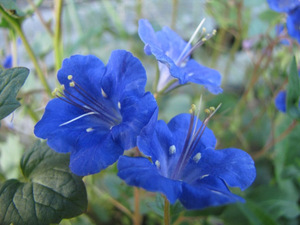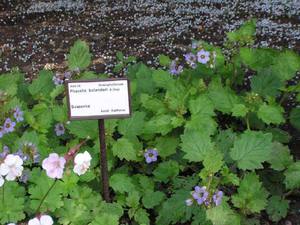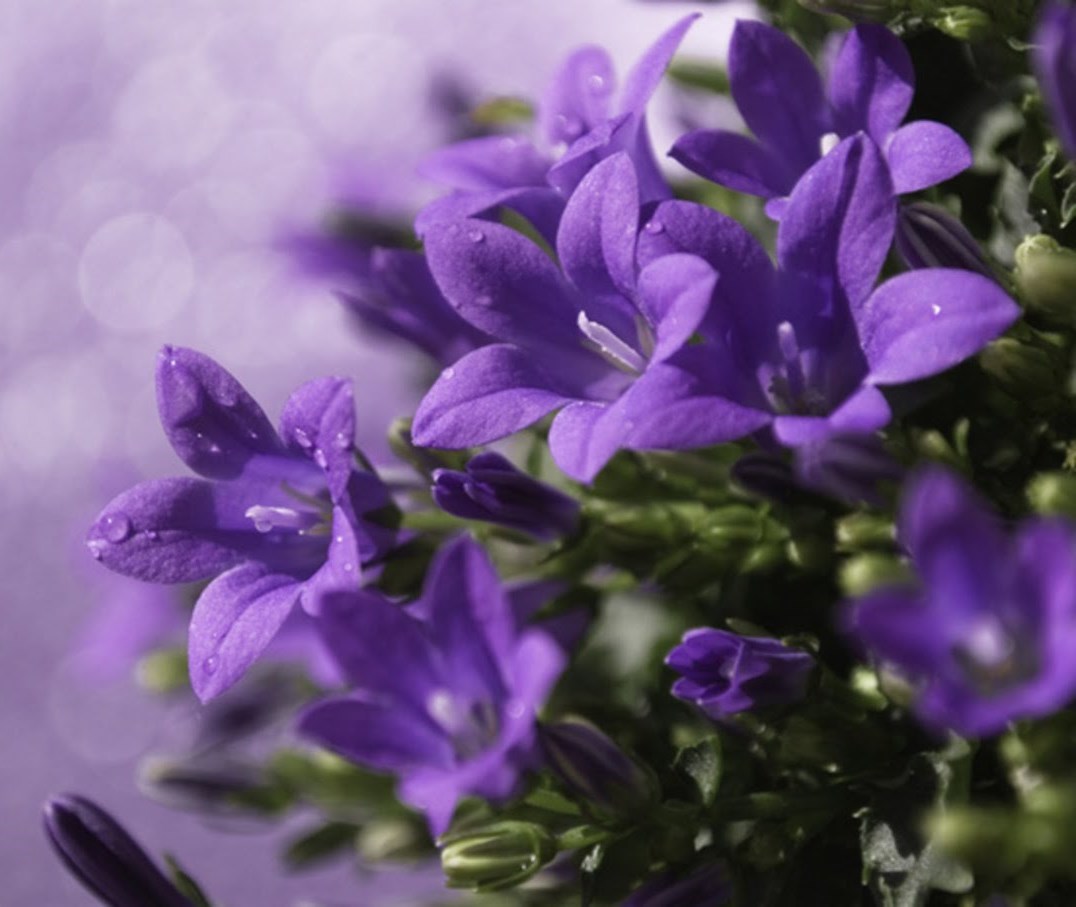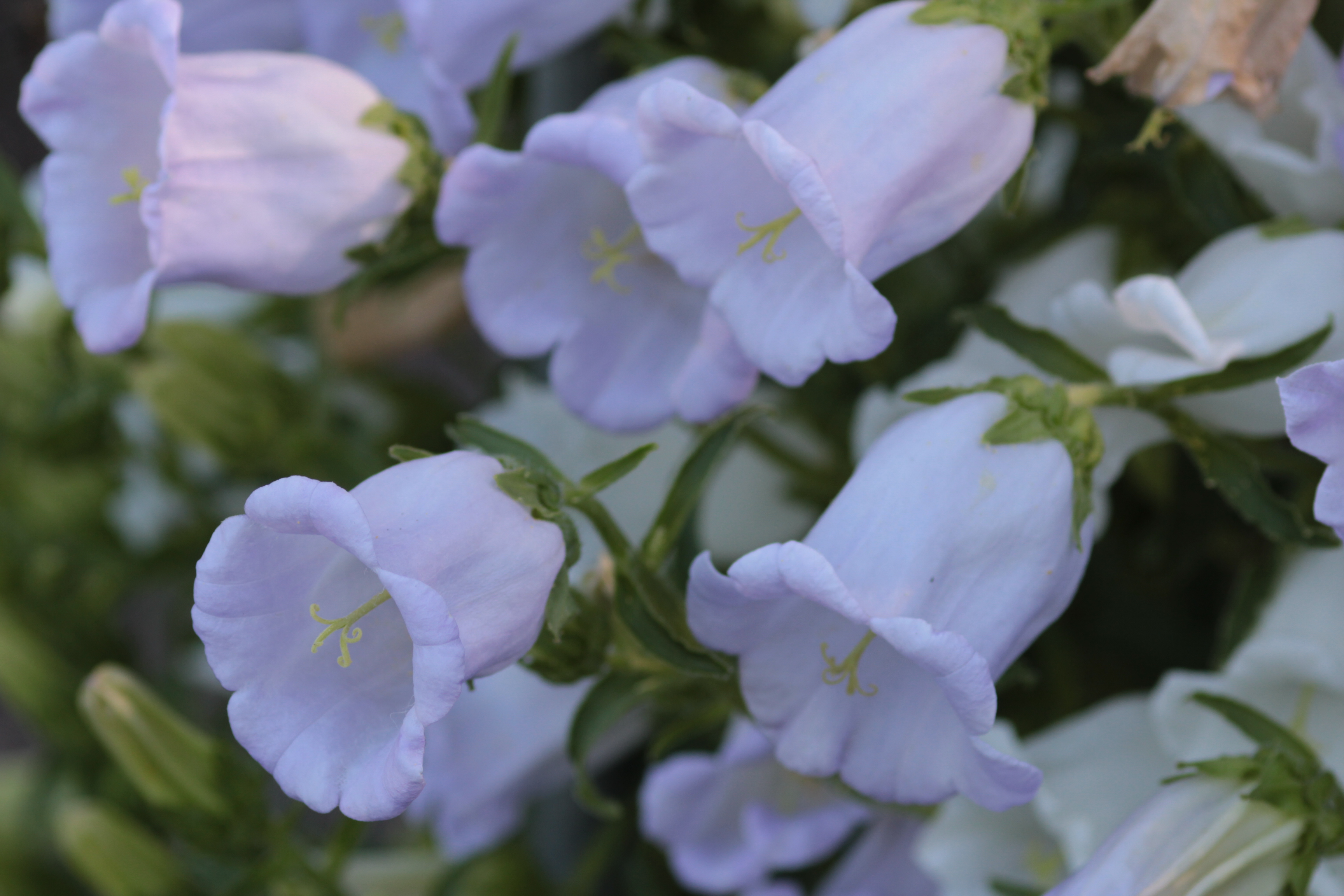Phaselya is the name for a genus that combines annuals and perennials, as well as a biennial form. Currently, up to eighty species of this herb from the family of aquifers (Hydrophyllacea) are known. Its Latin name comes from the Greek φάκελος, which means "bundle". The area of the plant is on both American continents.
On the territory of Russia, one of the species is cultivated as a melliferous green manure, and another one is cultivated as a decorative annual flower.
Description of the plant
 Phacelia campanulate, more commonly called phacelia californian bell (P. campanularia), is low-growing annual plant with an erect stem.
Phacelia campanulate, more commonly called phacelia californian bell (P. campanularia), is low-growing annual plant with an erect stem.
The shoots of the flower, with proper care, are juicy and rather fragile. The bluish-green leaves themselves have some decorative effect: serrated, long, weakly lobed, alternate on petioles.
Bell-shaped flowers are more often pronounced dark shades of blue with dark spots at the base of the calyx, white bottom and yellow anthers, reach three centimeters in diameter and are grouped in the form of one-sided racemose inflorescences.
The stamens of the ornamental varieties are usually long, protruding far beyond the edge of the calyx and slightly curled. The scent of a flowering plant is pleasing to the human sense of smell and attracts honey insects.
However, this variety does not differ in special melliferous properties and is cultivated exclusively for decorative purposes... Flowering covers almost all summer, starting around mid-June.
The fruit of the phacelia californian bell is a small-seeded capsule that produces many brown seeds that are suitable for growing flowers for four years. Reproduction is carried out by seeds directly into the soil, since the Californian phacelia bell does not tolerate transplants.
Plant height is about 20-25 centimeters. The flower is used in the following compositions:
- curb;
- rocky hills;
- hanging pots and semi-vases;
- container groups.
Phacelia bell-shaped looks good alone and in groups. After the phacelia seeds germinate, the Californian bell grows into a lush bush, covering the soil.
Care features
 The California bell is not one of the most whimsical plants. Quite enough thin out excessively dense seedlings at a distance of 5 to 8 cm. A small bush blooms quickly, early, unevenly.
The California bell is not one of the most whimsical plants. Quite enough thin out excessively dense seedlings at a distance of 5 to 8 cm. A small bush blooms quickly, early, unevenly.
This makes it possible to prolong flowering for the whole summer. Intensive branching of the bushes will prevent weeds from growing. In dry weather, it is necessary water abundantlysince the roots are small, shallow.
In addition to regular abundant watering, for especially strong flowering, the Californian bell twice a season needs to be fed with complex mineral fertilizer.
Growing and breeding conditions
 Growing a Californian bell from phacelia seeds will not be difficult, even for novice gardeners. Despite the fact that the bell-shaped phacelia prefers areas with good illumination and uniform solar heating, the flower is rather successfully cultivated on soil with high moisture.
Growing a Californian bell from phacelia seeds will not be difficult, even for novice gardeners. Despite the fact that the bell-shaped phacelia prefers areas with good illumination and uniform solar heating, the flower is rather successfully cultivated on soil with high moisture.
In general, the plant is characterized as:
- Drought-resistant.
- Shade tolerant.
- Frost resistant.
This combination of qualities is extremely valuable for an ornamental herbaceous plant. Best of all, the Californian bell develops on light fertile soils... When planting, 15 cm is left between the plants, and if it turns out closer, you can thin out in the future.
Seed material of phacelia california bell should be sown only in wet ground... Dry soil with a long dry period can ruin seedlings that have hatched at the wrong time.
There are no strictly designated seeding time limits, since it depends on the characteristics of the growing region: the season lasts from early spring to autumn, the best time from May to July.
Phacelia seeds are good for growing, as the flower is not afraid of late spring frosts, if the negative air temperature does not exceed five degrees.
When grown independently, the Californian bellflower seeds germinate in the interval of ten to fourteen days. It should be borne in mind that the seeds of the bell-shaped phacelia do not ripen at the same time, they easily fall out of the boxes, so they are collected many times.
In addition, the Californian bluebell phacelia produces self-seeding, which can also be used when grown from seed.
Phacelia california bell highly resistant to almost all diseases and pests affecting ornamental garden crops.


